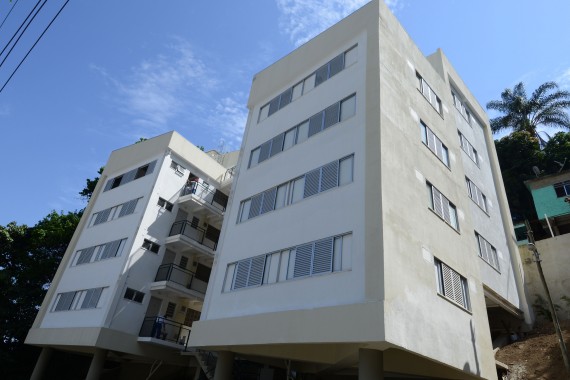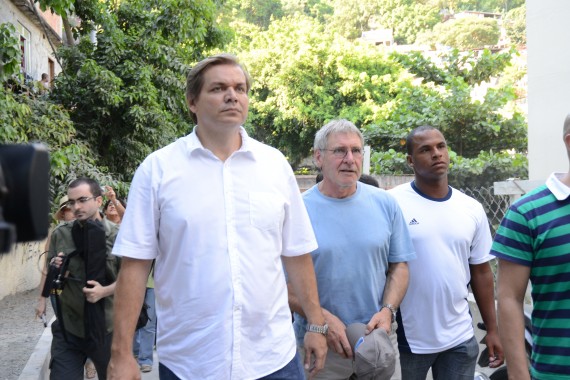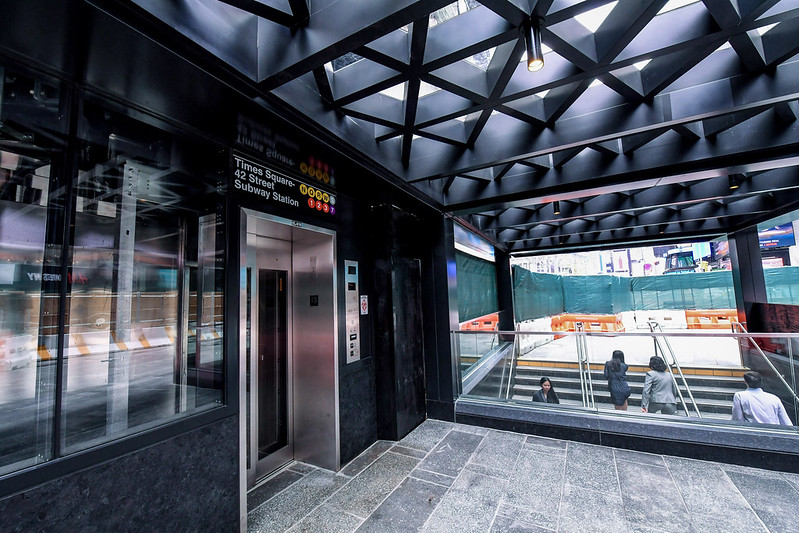
Photo: New-apartment-buildings-at-Babilonia-570×380
Rio to deliver favela’s first green houses
13 March 2013
by Richard Forster
On Friday, the Mayor of Rio de Janeiro, Eduardo Paes, will deliver the first 16 green houses built by the City Hall in the favela of Babilônia, as part of the project, Morar Carioca Verde. The green housing programme aims to urbanise every favela in Rio by 2020, not only delivering houses, but also schools, public squares and leisure equipment.
“The Morar Carioca Verde uses environmentally-friendly materials to help urbanise the favelas of Babilônia and Chapéu Mangueira at Leme [next to Copacabana] that include alternative material for soil, public illumination with LED and selective waste collection,” said Pierra Batista, Rio City Hall’s Municipal Housing Secretary. “The Ary Barroso Hill, which gives access to the communities, is being paved with a mix of asphalt and recycled car tyres. The investment for the work at these two communities amounts to R$52.4 million (US$27.8 million).”
Pacified by the state government, the favela has a UPP (Pacifying Police Unit) and is no longer controlled by drug traffickers. This made it possible for the communities to be chosen as the pilot for the green project, as they are partially located in an environmentally protected area. In order to resettle the families who used to live in these protected areas, City Hall is building new apartment buildings within the favela. Among the developments, the buildings will use solar energy, individual water and gas meters, recycled rainwater, possess windows that allow more ventilation and illumination, and more economical lighting with sensors in the common areas.
The project has attracted international interest, including visits from Michael Bloomberg, the Mayor of New York, and American actor, Harrison Ford. As a director of the non-governmental organisation, International Conservation, Harrison Ford visited the construction site for the Morar Carioca Verde project on February 17 at Morro da Babilônia favela, in order to learn about Rio’s initiative to promote sustainable urbanisation of the communities that was launched during Rio+20.

“Mr Ford was very curious to know all the details about the project and complimented Rio City Hall on the initiative,” said Batista. “He watched an eight minute video about the project and tried some local food prepared by the chef Regina Tchelly, from the buffet Favela Orgânica [Organic Favela], made with fruit peel and parts of vegetables that are not always traditionally used.”
A new type of concrete and metal structure that allows the reduction of residues was employed for the construction of the buildings. A cement structure that absorbs heat and provides a more comfortable temperature in the apartments was also used for the walls. The building is divided into two blocks, each with eight, 45 square metre apartments. These 16 residences are part of a total of 117 units that will be built in the area, using the same standards.










